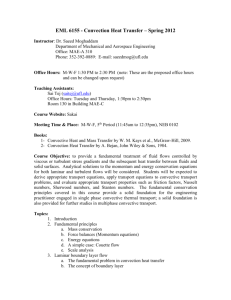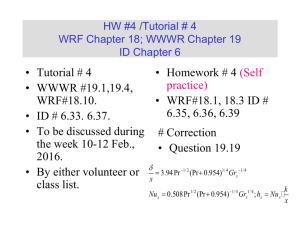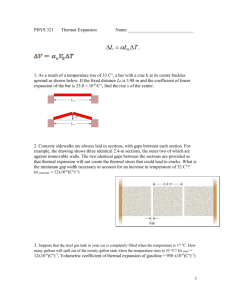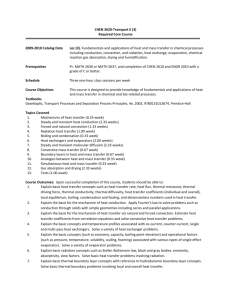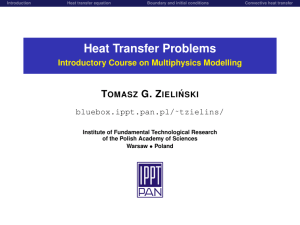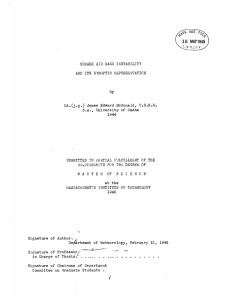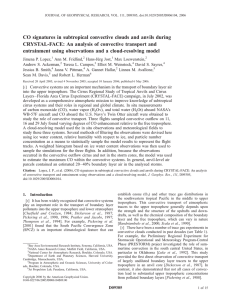T E ME
advertisement
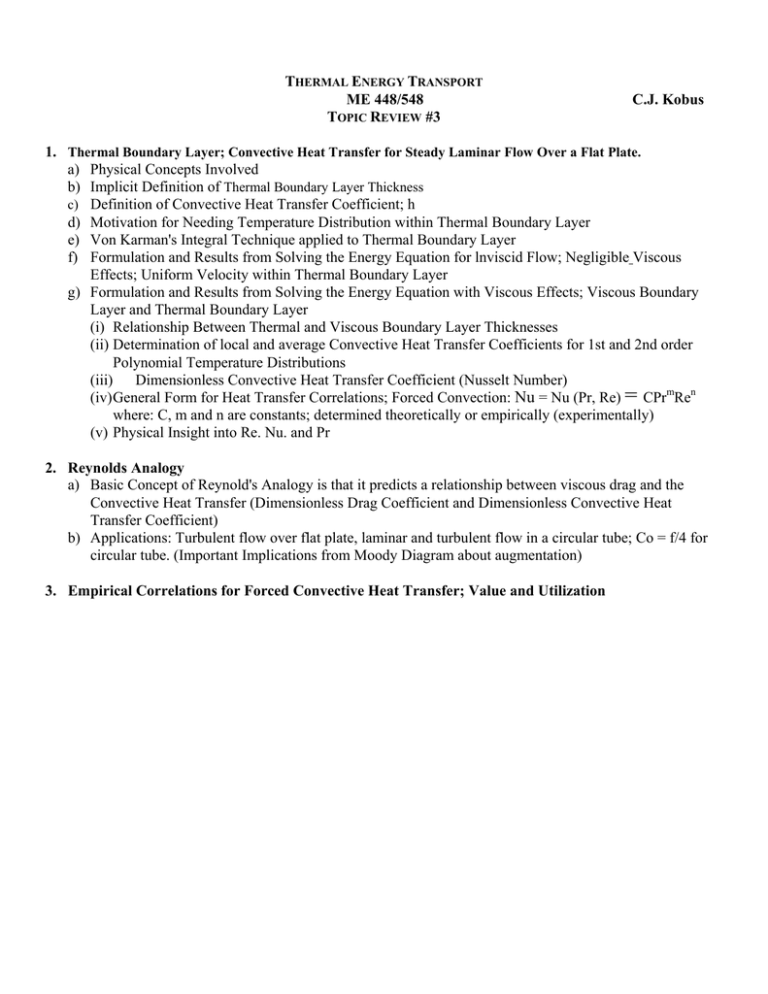
THERMAL ENERGY TRANSPORT ME 448/548 TOPIC REVIEW #3 C.J. Kobus 1. Thermal Boundary Layer; Convective Heat Transfer for Steady Laminar Flow Over a Flat Plate. a) Physical Concepts Involved b) Implicit Definition of Thermal Boundary Layer Thickness c) Definition of Convective Heat Transfer Coefficient; h d) Motivation for Needing Temperature Distribution within Thermal Boundary Layer e) Von Karman's Integral Technique applied to Thermal Boundary Layer f) Formulation and Results from Solving the Energy Equation for lnviscid Flow; Negligible Viscous Effects; Uniform Velocity within Thermal Boundary Layer g) Formulation and Results from Solving the Energy Equation with Viscous Effects; Viscous Boundary Layer and Thermal Boundary Layer (i) Relationship Between Thermal and Viscous Boundary Layer Thicknesses (ii) Determination of local and average Convective Heat Transfer Coefficients for 1st and 2nd order Polynomial Temperature Distributions (iii) Dimensionless Convective Heat Transfer Coefficient (Nusselt Number) (iv) General Form for Heat Transfer Correlations; Forced Convection: Nu = Nu (Pr, Re) = CPrmRen where: C, m and n are constants; determined theoretically or empirically (experimentally) (v) Physical Insight into Re. Nu. and Pr 2. Reynolds Analogy a) Basic Concept of Reynold's Analogy is that it predicts a relationship between viscous drag and the Convective Heat Transfer (Dimensionless Drag Coefficient and Dimensionless Convective Heat Transfer Coefficient) b) Applications: Turbulent flow over flat plate, laminar and turbulent flow in a circular tube; Co = f/4 for circular tube. (Important Implications from Moody Diagram about augmentation) 3. Empirical Correlations for Forced Convective Heat Transfer; Value and Utilization

